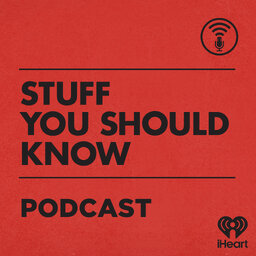How Weather Modification Works
It began with old-timey guys dropping dry ice on clouds. Since then weather modification was used to keep the 2008 opening ceremonies dry and flood the Ho Chi Minh Trail, but does it work? Learn about weather control plans, diabolical or otherwise.
Learn more about your ad-choices at https://www.iheartpodcastnetwork.com
 Stuff You Should Know
Stuff You Should Know


